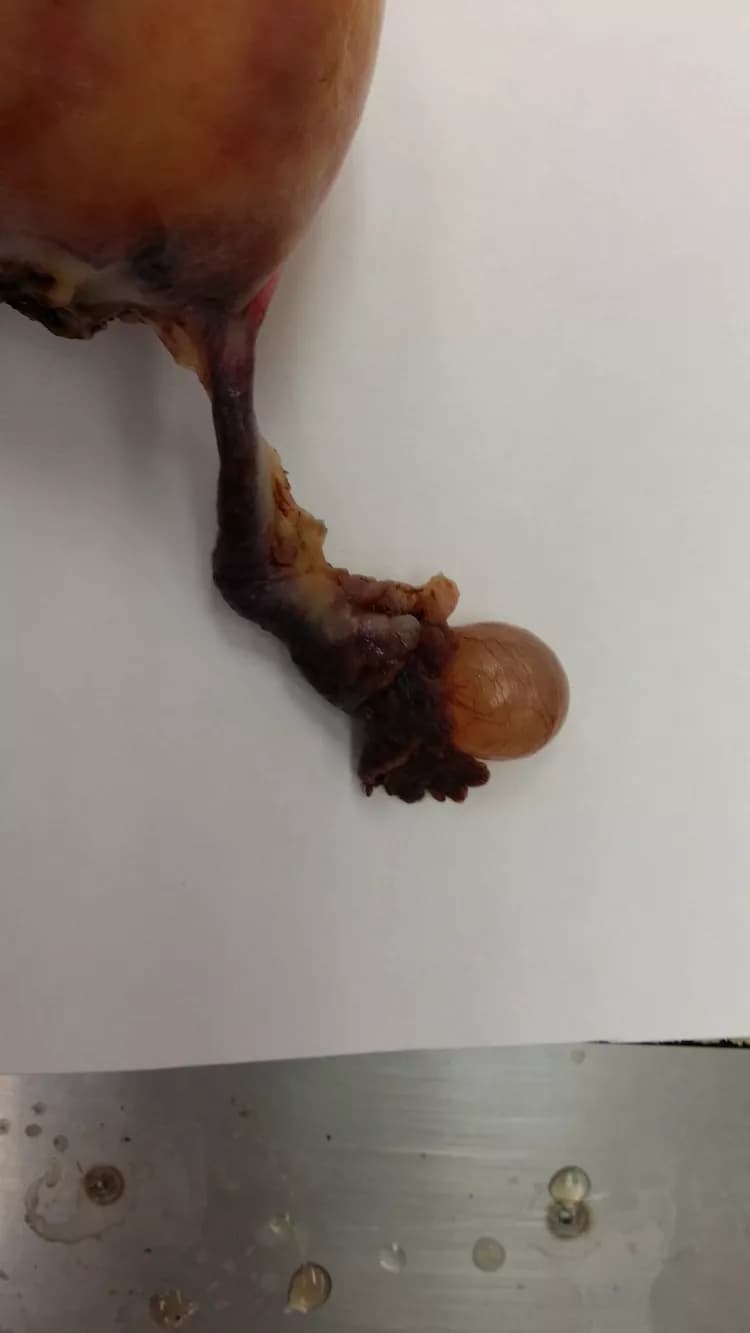
Mutation In Fallopian Tube Lesions May Help Catch Ovarian Cancer Years Earlier
Screening for tumor cells in the fallopian tubes of women at high-risk for ovarian cancer may help detect the cancer years before it develops further, suggests a new study co-led by researchers at Penn Medicine and published online this week in Nature Communications.
Work from Ronny Drapkin, MD, PhD, an associate professor of Pathology in Obstetrics & Gynecology at the Perelman School of Medicine at the University of Pennsylvania and director of gynecologic cancer research at the Basser Center for BRCA at the Abramson Cancer Center of the University of Pennsylvania, and others, has shown through human tumor studies and animal models that ovarian cancer can start in the fallopian tubes and secondarily move to the ovaries where it is clinically diagnosed. However, it was not clear how and when these cancers developed, or how to best detect them before they progressed to the ovaries.
The new study traces the origins of high-grade serous ovarian carcinoma (HGSOC), the most frequent type of ovarian cancer that is often diagnosed at advanced stages, back to fallopian tube lesions known as 'p53 signatures' and serous tubal intraepithelial carcinomas (STICs) that harbor the TP53 gene mutations.
On average, the timing of the progression from the STICs to ovarian cancer in the five patients analyzed was 6.5 years, with the cancer spreading to other areas quickly thereafter. The same TP53 gene mutations showed up in both the tube lesions and ovarian tumors of the women, all of whom also carried other high-risk mutations, such as BRCA or PTEN.
"These data provide much-needed insights into the etiology of ovarian cancer and have important implications for prevention, early detection and therapeutic intervention of the disease," said Drapkin, who also serves as director of the Penn Ovarian Cancer Research Center. "It points us to a signature in the tubes to look for, and shows us a window of time to spot these cancers before they morph into something more sinister in the ovaries."
Drapkin conducted early portions of the study while at the Dana-Farber Cancer Institute. Victor E. Velculescu, MD, PhD, of Johns Hopkins Kimmel Cancer Center, served as co-senior author.
The researchers performed next-generation sequencing on 37 samples taken from five patients' STIC lesions, fallopian tube carcinomas, and ovarian cancers. Samples were also taken from metastases in the appendix, abdomen, and rectum in three patients. In addition, the team further analyzed isolated STIC lesions from four patients, three of whom had BRCA mutations and had their ovaries and tubes removed prophylactically. The fourth had her ovaries and tubes removed and a hysterectomy in the context of a pelvic mass surgery.
The researchers identified sequence changes in the TP53 tumor suppressor gene, a well-known driver gene in HGSOC, in all the patients. Those alterations were identical in all the samples from the same patient, including in the p53 (a tumor protein) signatures, the STIC lesions, and other carcinomas, suggesting that mutation of TP53 was among the earliest initiating events for HGSOC development, the authors said.
To recreate the timeline of the tumors, researchers used a mathematical model that estimates the interval between a "founder" cell of a tumor and the ancestral precursor cell in the lesions, using the mutation rates and cell division times observed in each patient.
In one patient, the time between STICs and ovarian cancer was two years. For the four remaining patients, the time was, on average, 6.5 years. Importantly, in patients with metastatic lesions, the time between the initiation of ovarian cancer and development of metastases was rapid, with an average of two years, the researchers reported.
The study further supports the concepts behind the recommendation for BRCA carriers and non-carriers to remove the fallopian tubes, rather than the ovaries -- which may significantly reduce their risk, as it eliminates the underlying cellular precursors of ovarian cancer, and that preservation of the ovaries provides long-term benefits, particularly for younger women.
These insights also open the prospect of new approaches for screening, which is especially important, given the limited therapeutic options currently available for ovarian cancer. For example, recent advances in detecting mutations in liquid biopsies, pap smears, and other bodily fluids and imaging approaches may provide opportunities in early diagnosis and intervention, the authors wrote.
"These results represent an important step forward that helps fills a knowledge gap on the evolution of this cancer," Drapkin said. "More studies with a larger cohort of patients are needed to better understand these lesions and the progression into ovarian cancer, but this latest one suggests that examination of the fallopian tubes should become common practice in pathology, and not confined to just academic centers."
Materials provided by University of Pennsylvania School of Medicine. Note: Content may be edited for style and length.
Disclaimer: DoveMed is not responsible for the accuracy of the adapted version of news releases posted to DoveMed by contributing universities and institutions.
References:
S. Intidhar Labidi-Galy, Eniko Papp, Dorothy Hallberg, Noushin Niknafs, Vilmos Adleff, Michael Noe, Rohit Bhattacharya, Marian Novak, Siân Jones, Jillian Phallen, Carolyn A. Hruban, Michelle S. Hirsch, Douglas I. Lin, Lauren Schwartz, Cecile L. Maire, Jean-Christophe Tille, Michaela Bowden, Ayse Ayhan, Laura D. Wood, Robert B. Scharpf, Robert Kurman, Tian-Li Wang, Ie-Ming Shih, Rachel Karchin, Ronny Drapkin, Victor E. Velculescu. (2017). High grade serous ovarian carcinomas originate in the fallopian tube. Nature Communications. DOI: 10.1038/s41467-017-00962-1
Related Articles
Test Your Knowledge
Asked by users
Related Centers
Related Specialties
Related Physicians
Related Procedures
Related Resources
Join DoveHubs
and connect with fellow professionals

0 Comments
Please log in to post a comment.